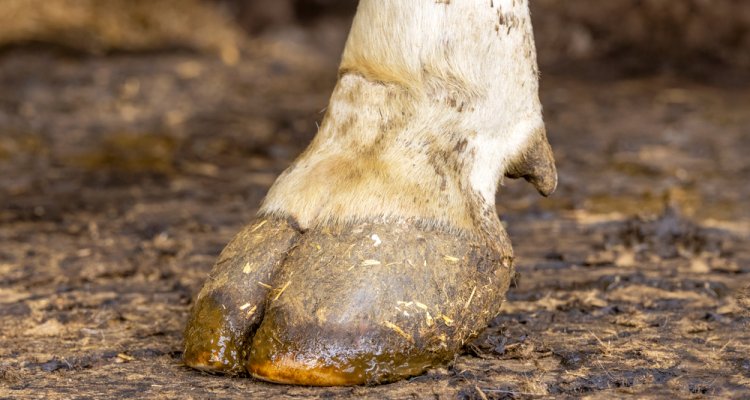
Project
Transmission of digital dermatitis in dairy cattle
This project aims to study the transmission of the infectious claw disease Digital Dermatitis (“Mortellaro’s disease”) in dairy cattle and to investigate the genetic and environmental factors contributing to the transmission of the infection. Knowledge of those factors allows genomic selection for better claw health.
Digital Dermatitis (DD) is an important claw infection in dairy cattle, leading to poor health and wellbeing. Therefore, to better breed against DD, it is crucial to better understand the transmission of DD, and, in particular, to estimate the genetic variation in the propensity of individuals to infect others, the so-called Indirect Genetic Effect.
This involves the large-scale collection of individual infection status data, knowledge of the cows’ interaction history, particularly (indirect) interactions between infected individuals with their susceptible counterparts via the floor (the “whereabouts” to determine environment sharing), and a mechanistic model to identify and quantify the genetic factors underlying the transmission of DD.
The researchers focus on automated detection of DD status, tracking of animals in time and space, and modelling. They build on our previous research, which has demonstrated considerable genetic variation in traits underlying DD prevalence and has provided proof of the principle that DD can be detected visually while cows are standing (for example, in the milking parlour).
Progress (July 2023)
To automatically detect claw infections, the researchers have set up a camera system in the milking parlour, to examine the claws and link the image to the individual cow. The data from this system is combined with the cows’ disease status data (the ground truth for claw health) and the cow tracking system that has been installed at Dairy Campus in collaboration with Noldus IT. Using the cows’ disease status data, the researchers annotated claw images and subsequently trained AI algorithms to automatically detect infection status from images.
In the next stage, the researchers will use the trained algorithms to collect larger-scale data on individual infection status and then link these data to transmission models of DD and cow genotypes. We are developing a mathematical model that will contribute to our understanding of environmental transmission of the complex of pathogens that are involved in DD transmission within the barn. To bring this about, we are analysing the cows’ disease status data and the daily cow movement obtained by the tracking system to use as input for the model.